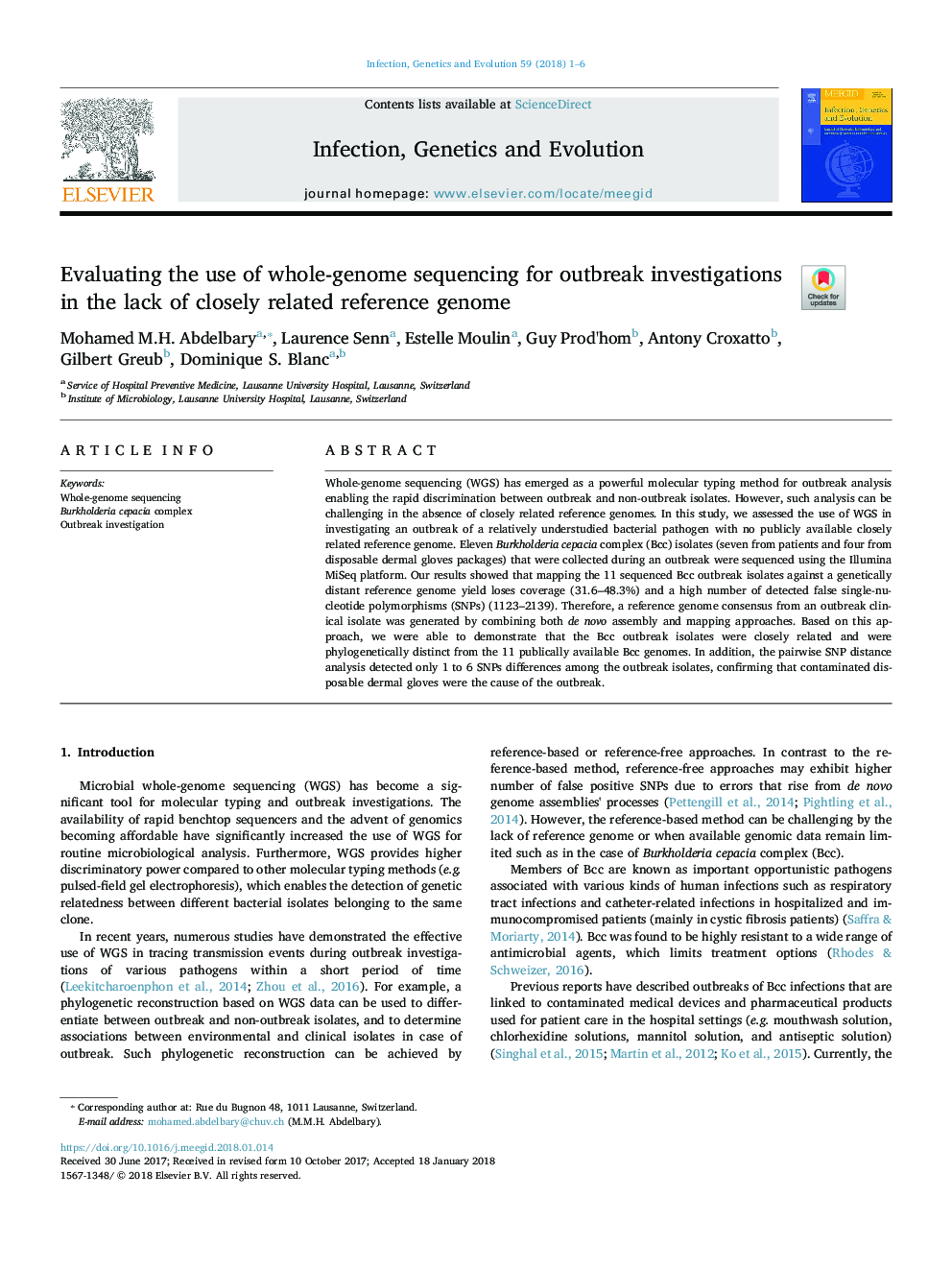| Article ID | Journal | Published Year | Pages | File Type |
|---|---|---|---|---|
| 8646905 | Infection, Genetics and Evolution | 2018 | 6 Pages |
Abstract
Whole-genome sequencing (WGS) has emerged as a powerful molecular typing method for outbreak analysis enabling the rapid discrimination between outbreak and non-outbreak isolates. However, such analysis can be challenging in the absence of closely related reference genomes. In this study, we assessed the use of WGS in investigating an outbreak of a relatively understudied bacterial pathogen with no publicly available closely related reference genome. Eleven Burkholderia cepacia complex (Bcc) isolates (seven from patients and four from disposable dermal gloves packages) that were collected during an outbreak were sequenced using the Illumina MiSeq platform. Our results showed that mapping the 11 sequenced Bcc outbreak isolates against a genetically distant reference genome yield loses coverage (31.6-48.3%) and a high number of detected false single-nucleotide polymorphisms (SNPs) (1123-2139). Therefore, a reference genome consensus from an outbreak clinical isolate was generated by combining both de novo assembly and mapping approaches. Based on this approach, we were able to demonstrate that the Bcc outbreak isolates were closely related and were phylogenetically distinct from the 11 publically available Bcc genomes. In addition, the pairwise SNP distance analysis detected only 1 to 6 SNPs differences among the outbreak isolates, confirming that contaminated disposable dermal gloves were the cause of the outbreak.
Related Topics
Life Sciences
Agricultural and Biological Sciences
Ecology, Evolution, Behavior and Systematics
Authors
Mohamed M.H. Abdelbary, Laurence Senn, Estelle Moulin, Guy Prod'hom, Antony Croxatto, Gilbert Greub, Dominique S. Blanc,
